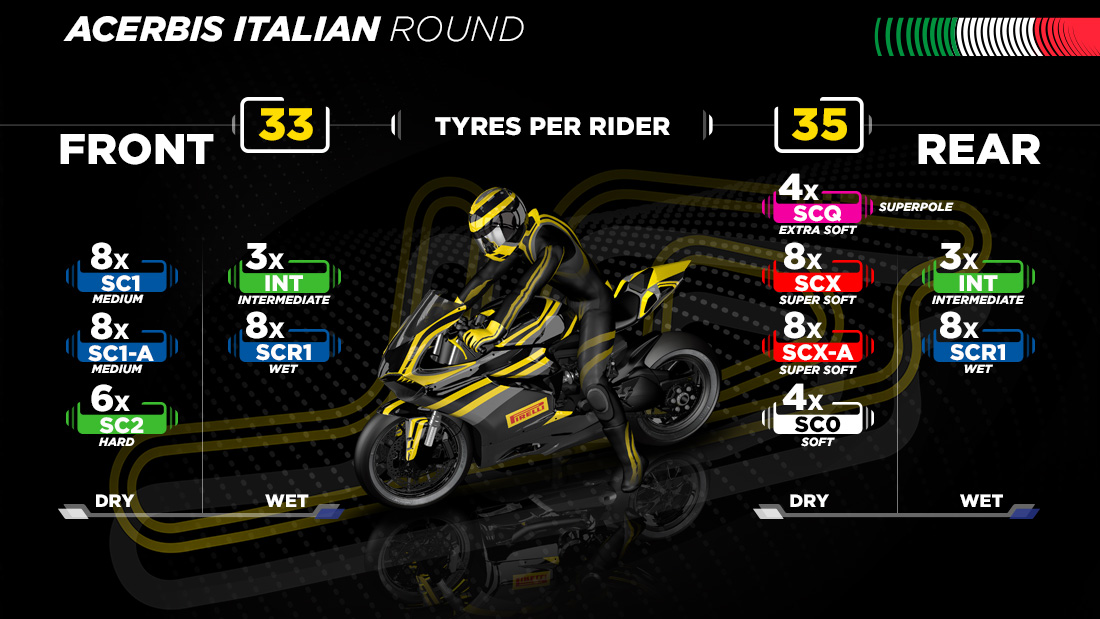
| As the Italian circuit celebrates its debut with the production bike World Championship, the development slick solutions for the Superbike class already seen in action at Magny-Cours are back on stage | ||
| The FIM Superbike World Championship arrives for the first time in its history at the Cremona Circuit to compete in the Italian round that will take place next weekend. The Cremona Circuit thus becomes the seventh Italian circuit to host the World Championship for production-derived bikes. For the Superbike class, Pirelli has decided to keep in the allocation the development innovations for the dry tyres that made their debut in the last round at Magny-Cours, in France: the front SC1, in specification D0715, which differs from the standard version in terms of structure, and the rear SCX, in specification D0820, which has a new compound compared to the standard solution. A circuit we know but on which we have never raced with Superbikes · Development SC1 and SCX: again, for the Cremona races Pirelli offers the allocation of the two development options introduced in the Magny-Cours round, namely the front SC1 in specification D0715 and the rear SCX in specification D0820, both in quantities of 8 units each. For the front, 8 units of the standard SC1 and 6 of the SC2 will also be available, while for the rear there will be 8 units of standard SCX and 4 units of both SC0 and SCQ, the latter reserved for qualifying and the Superpole Race. In case of rain, the riders will have 3 units of Intermediate tyres and 8 of SCR1 tyres, both for the front and rear. · WorldSSP allocation: all the solutions chosen for this class are represented by standard tyres. For the front, each rider will have 7 units of SC1 and 6 of SC2 available, while for the rear there will be 7 units of SCX and 6 of SC0. · Wear and track evolution: in recent months, the circuit has undergone important changes, with some revised corners and the increase in total length up to the current 3,768 metres. Since the end of these works, not many motorsport events have taken place on the track, so the surface could be not yet “rubberized” perfectly. This means that the patina of rubber that integrates into the grain of the asphalt with the passage of motorcycles and cars and that contributes to increasing grip has not yet formed. With the intense activity expected from Friday’s practice, and the consequent cleaning and rubberization of the track, the situation is destined to evolve over the weekend. |

Michael Le Pard (“Mr. Totalmotorcycle”) is the Founder of Total Motorcycle, the world’s largest motorcycle information site, trusted by over 430 million riders since 1999. With over 34 years of experience in motorcycles, gear and rider culture, he has built a global community dedicated to empowering and inspiring motorcyclists.
Total Motorcycle remains his passion project. Combining expert research, hands‑on knowledge and a commitment to helping riders make informed decisions about bikes, gear and safety worldwide.


